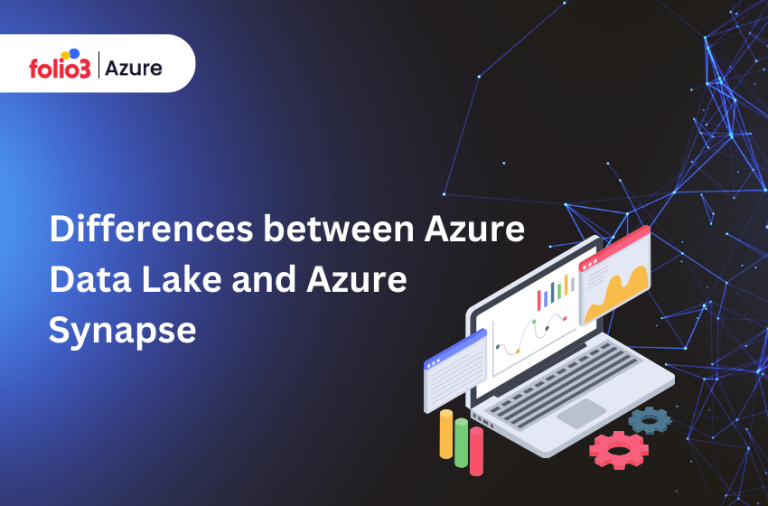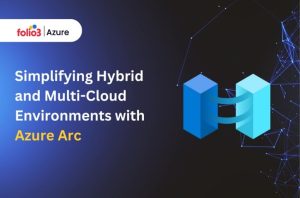Table of Contents
ToggleAre you perplexed by the range of big data processing services available to you? Worry not, we have the perfect answer! This blog post will explore two widely-used options: Azure Data Lake Analytics vs Synapse. Each has its own advantages and drawbacks, but with a deeper understanding, you’re sure to make an educated decision on which is best suited for your requirements. Without further ado, let’s go into the world of big data analytics with Azure!

What is Azure Data Lake Analytics
Azure Data Lake Analytics (ADLA) is a cloud-based big data analytics service that allows you to develop and run massively parallel data transformation programs. ADLA is designed to handle a wide variety of data types and formats, including structured, semi-structured, and unstructured data.
ADLA also offers support for streaming data, which means that you can process data as it arrives instead of waiting for it to be processed in batches. One of the key benefits of using ADLA is that it offers a pay-as-you-go pricing model. This means that you can scale your data processing capabilities as your needs grow. ADLA also offers a variety of pre-built functions that you can use to analyze your data.
What is Azure Synapse Analytics?
Azure Synapse Analytics is a service that offers unlimited information analysis that is geared toward large companies. It was presented as the evolution of Azure SQL Data Warehouse (SQL DW), and it brings together business data storage and macro or Big Data analysis. Azure Synapse Analytics is a part of Microsoft Azure.
When it comes to the processing, managing, and providing of data for immediate demands in business intelligence and data prediction, Synapse offers a single solution that can handle all workloads. Because Synapse can integrate mathematical machine learning models that use the ONNX format, the latter is made possible by its integration with Power BI and Azure Machine Learning. This is due to Synapse’s ability to integrate mathematical machine-learning models.
It gives users the flexibility to manage and query massive amounts of data either on demand with serverless deployments (a type of deployment that automatically scales power on demand when large amounts of data are available) for data exploration and ad hoc analysis or with provisioned resources at scale.
The service provided by Microsoft is known as Software as a Service (SaaS), and it can be utilized on demand to only run when it is required (which has an impact on cost savings). It consists of the following four parts:
SQL Analytics with comprehensive T-SQL-based analysis: SQL Cluster (pay per unit of compute), and SQL on Demand (pay per TB processed).
Complete incorporation of Apache Spark.
Connections that are compatible with numerous sources of data.
Azure Synapse makes use of Azure Data Lake Storage Gen2 as both a data warehouse and a consistent data model. This model includes parts for administration, monitoring, and metadata management. In the realm of security, it enables you to protect, monitor, and manage your data and analysis solutions, such as through the use of single sign-on and interaction with Azure Active Directory. Azure Synapse is much more than a typical data warehouse because it includes additional stages of the process and gives users the ability to create reports and visualizations in addition to completing the data integration and ETL processes. In essence, Azure Synapse finishes the entire data integration and ETL process.
It supports a variety of programming languages, including SQL, Python, .NET, Java, Scala, and R, so developers can choose the language that best suits their needs. Because of this, it is very well-suited for a wide variety of engineering profiles and types of analytical workloads.
Everything is contained within the Synapse Analytics Studio, which makes it simple to combine Artificial Intelligence, Machine Learning, the Internet of Things, intelligent Applications, and Business Intelligence, all while remaining on the same unified platform.
Azure Data Lake Analytics vs Synapse
Azure Data Lake Analytics (ADLA) is a big data processing service that allows you to run massively parallel data transformations on large data sets. It is built on top of the Hadoop Distributed File System (HDFS) and uses Apache YARN for cluster management. Synapse is a cloud-based analytics platform that integrates data from multiple sources and provides a unified view of your data. It uses a columnar database engine called VertiPaq to store data and supports in-memory computing for fast performance.
So What are the Differences Between these Two Services?
First, let’s look at how they are similar. Both ADLA and Synapse are cloud-based solutions that can handle large amounts of data. They both use parallel processing to speed up processing time, and they both support in-memory computing for even faster performance.
Now let’s look at the differences. The biggest difference is in the storage engine. ADLA uses HDFS, which is a file system designed for storing large amounts of data. Synapse uses VertiPaq, which is a columnar database engine. VertiPaq is more efficient than HDFS because it stores data in columns rather than rows. This means that VertiPaq can compress data more efficiently, which reduces storage costs.
Another difference is in the way that each service processes data. ADLA transforms data by running MapReduce jobs on a Hadoop cluster. Synapse uses a columnar database to store data and performs data transformations in memory. This makes Synapse faster and more efficient than ADLA because it doesn’t have to wait for MapReduce jobs to finish before it can process new data.
When to use Azure Data Lake Analytics vs Synapse
If you want to process and analyze data from multiple sources, then Synapse Analytics is the better choice. However, if you only need to process and analyze data from a single source, then Azure Data Lake Analytics might be a better choice.
How to get started with Azure Data Lake Analytics and Synapse
If you’re looking to start working with Azure Data Lake Analytics (ADLA) or Synapse, there are a few key things you need to know. In this blog post, we’ll go over some of the basics of each platform and how to get started.
Azure Data Lake Analytics is a cloud-based data processing service that allows you to easily analyze data from a variety of sources. You can use ADLA to run complex queries on large data sets, and the platform makes it easy to scale your processing needs as your data grows.
Synapse is a cloud-based data warehouse service that provides fast, scalable storage and analysis for big data workloads. Synapse provides a flexible serverless architecture that can be used for data warehousing, analytics, and machine learning tasks.
To get started with either ADLA or Synapse, you’ll first need an Azure subscription. Once you have an Azure subscription, you can create a new ADLA or Synapse account through the Azure portal.
When creating your ADLA or Synapse account, you’ll need to specify a few details, such as the location of your account, the pricing model, and the resource group where your account will be created. After your account has been created, you can start adding data sources and running queries.
If you’re new to ADLA or Synapse, we recommend checking out the getting started guides for each service
Summing up
As we’ve seen, Azure Data Lake Analytics vs Synapse are two very different products. While both offer a variety of benefits, it’s important to understand the differences between them so that you can choose the right tool for your needs.
Here’s a quick recap of the key differences:
- Azure Data Lake Analytics is a cloud-based data processing service that enables you to analyze data from multiple sources. Synapse is a cloud-based data warehouse that offers fast query performance and scalable storage.
- Azure Data Lake Analytics uses U-SQL, a powerful query language that allows you to process and analyze data in many different ways. Synapse uses T-SQL, which is more limited in its ability to process data.
- Azure Data Lake Analytics can be used to process both structured and unstructured data. Synapse is designed to process only structured data.
- Azure Data Lake Analytics charges you based on the amount of data processed. Synapse charges you based on the amount of data stored and the number of queries executed.
Folio3 is provides end-to-end data analytics solutions as well as consultation to help you through the process of selecting the right tools and building the best architectures. Both Azure Data Lake Analytics and Synapse provide powerful tools for data analysis and storage, so understanding the differences between them can help you make the best decision for your specific needs. If you’re looking to process and analyze data from multiple sources, then Azure Data Lake Analytics is the better choice. However, if you only need to process and analyze data from a single source, then Synapse might be a better choice. It all depends on your needs and your budget.


